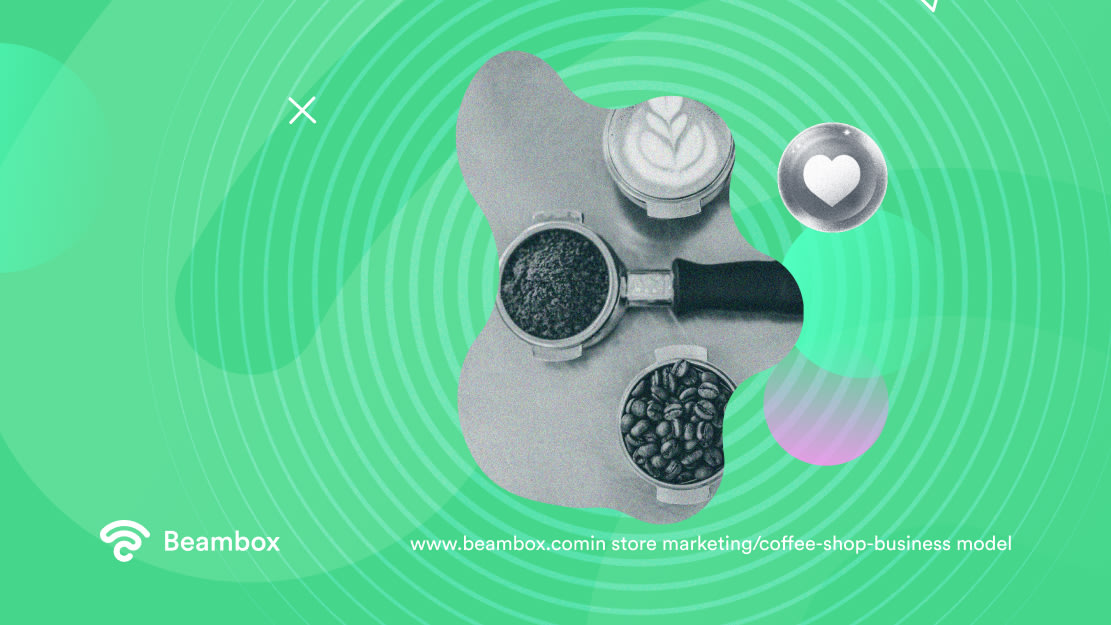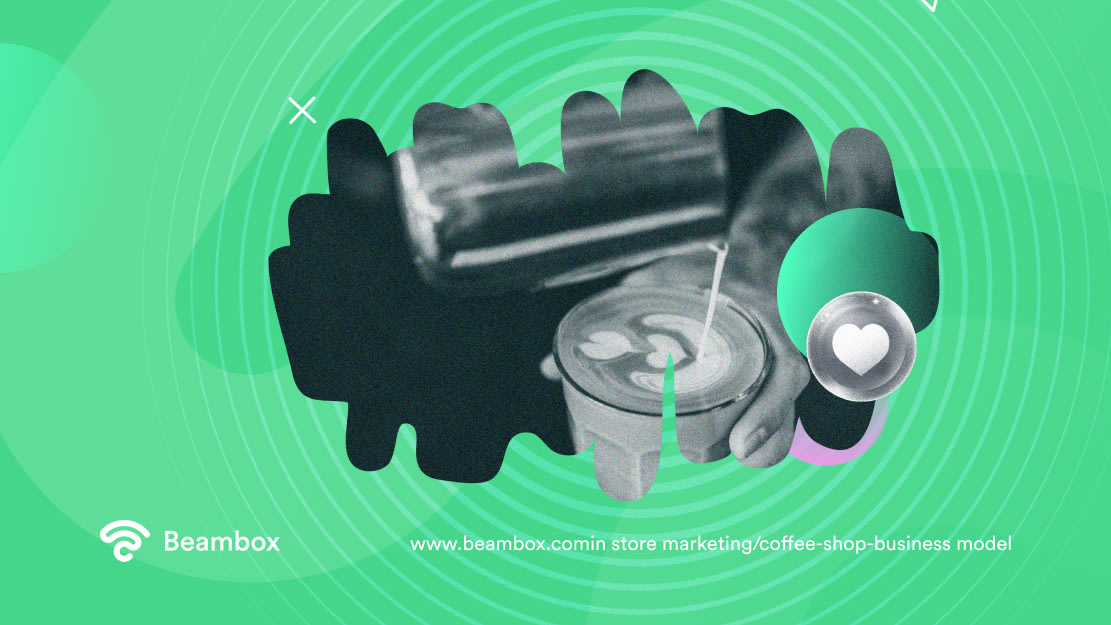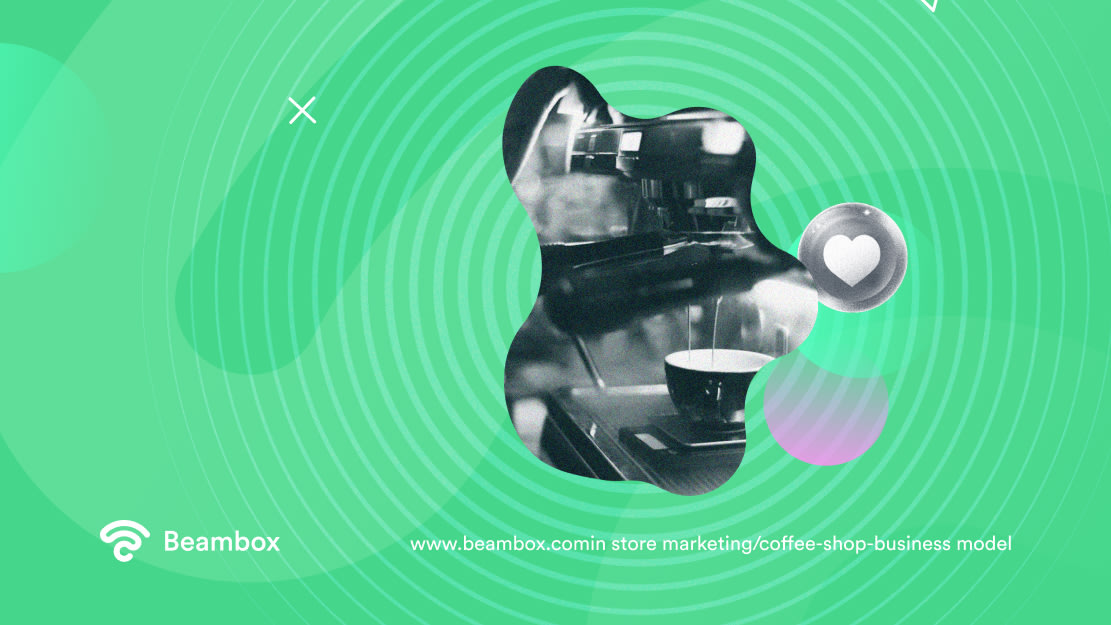Figuring out coffee bean sourcing and equipment isn’t the first thing to worry about when opening a coffee shop. How will you make sales if you don’t know who you want to target and how? That’s why you first need to develop a coffee shop business model.
Besides, coffee shops have become more than just a place to get a caffeine fix. They’ve become the prime venue for socializing, meetings, hanging out, working, or simply reading.
You have to keep this in mind if you want your coffee house to be successful. The information you’ll get in this guide will be enough to fill your venue with hustle and bustle.

Difference Between a Coffee Bar Business Plan and a Business Model
It’s common for business owners to think of a coffee bar business plan and business model as the same. But while they relate to each other, there are subtle differences that set them apart.
If you don’t pay attention to these differences, you might not be able to create the right business model.
So, a business plan is a document you create to outline the future of your business. It has everything from your customer profile to the marketing plan you’ll use to make your coffee house famous.
Besides, you won’t be running your business alone, so you must also focus on your staff and management. How they treat your business will also have a say in how it performs.
A business plan helps you figure these things out and steer your coffee shop in the direction of success.
On the other hand, a business model covers how you plan on making profits once you open your coffee shop.
It helps you figure out your place among competitors, investors, and other stakeholders. This way, you know exactly what to do in case an investor is unhappy or if a competitor gets ahead of you.
Moreover, it also helps you figure out the operating costs and pricing strategy for your coffee house.
If a business plan sets a financial plan for you, a business model describes how you’ll achieve it.

7 Core Elements of a Successful Coffee Shop Business Model
While a coffee shop business model isn’t a standalone document, there are a few things you need to figure out. It’s a fundamental framework that you can choose to turn into a document to keep these things handy. So, here are the seven core elements you must keep in mind.
- Value proposition: Figure out a unique point about your business that can set you apart. Why should customers choose you over your competitors? After all, blindly following what other people are doing won’t do you any good.
- Revenue model: Selling coffee and baked items isn’t the only way to earn revenue. You can also sell merchandise or packaged coffee. So, choose all your preferred revenue streams.
- Market demand: See if the value proposition you’ve chosen is in demand. You don’t want to start a whole business only to realize that your particular offering isn’t something people want.
- Costs and pricing strategy: You’ll be investing a lot of money to put the above things into action. If you fail to choose the right pricing after that, you’ll end up with a loss instead of profits.
- Competition: If you’ve established that the coffee you’re offering is in high demand, it may already be readily available elsewhere. So, see if you have the opportunity to set yourself apart from your competition. For example, will you offer a free donut with every purchase?
- Market strategy: This is the first step of the sales funnel. Once you’ve figured out how you’ll set yourself apart, the only thing you need to do is enter the market. But for that, you’ll have to make a first impression and attract customers. So, what marketing campaigns do you want to run.
- Organization development: A business needs organization and rules to run smoothly. Without strict boundaries and processes, you may find your business in chaos. So, write down your business processes and make sure your staff follows them to a T.
How To Create a Coffee House Business Plan
Starting a coffee shop is one of the safest business ideas. After all, experts expect the total revenue in the coffee industry to grow by 3.5% through 2029.
Even after the pandemic, it didn’t take long for this industry to start enjoying its revival. That’s how much coffee and its ambiance mean to people.
However, you won’t be able to claim your part in this revenue without a coffee house business plan. Think of this document as a roadmap to set goals that you’ll achieve by following your business model. So let’s discuss how to create a good one.

1. Start by Writing the Executive Summary and Company Overview
The first step for coffee shop owners is writing the executive summary and company overview. Of course, you know why you’re starting your coffee shop and what your aim is.
But other people will also be referring to this document, so the information should be there. Especially because you’ll be showing this business plan to investors in hopes of getting a kickstart. If this first step isn’t persuasive enough, they might not even bother reading the rest.
So start by adding a fruitful coffee shop concept. It will not only persuade investors but also set you apart from your competition.
For example, you could make your place an espresso catering business, a coffee house bookstore, a mobile coffee truck, etc. But it will take time since you have to ensure nobody else in your area is doing the same.
An overview of your budget will also be a part of the executive summary. This way, you’ll be able to plan costs and pricing to make your coffee shop profitable.
Moreover, you must add your core values, as well as mission and vision statements. They will not only persuade your investors but also motivate your employees.
Market opportunity must also make an appearance in this part of the document before the company overview. Now, you might confuse the executive summary with the overview, but they’re different.
Where the summary is your chance to persuade, the overview prepares the reader for the rest of the plan.
Brewing processes, location, hiring and serving practices, food and coffee products, customer experience, etc., make this part of the document.
Lastly, nobody wants chaos in the business they’ve started with so much effort. Having clear business processes and operations will help you avoid this.

2. Choose Your Target Market To Come Up With the Right Strategies
The next step is to conduct a coffee shop target market analysis to choose the ones you want to serve. Not everyone who enters your venue will have the same taste in coffee. In fact, there are five groups of people you need to think about.
Firstly, there are the true coffee lovers to whom coffee isn’t merely a beverage. It’s an experience that they crave in their daily life. They’re even willing to pay a premium price for a standout cup of coffee.
Moreover, they lose track of time when they start talking about coffee. Even the slightest change in the taste is enough to upset them.
Then, some people treat coffee as a beverage that wakes them up and gets them going.
While this group of people does care about good taste, they aren’t as particular as the first one. For them, all beans are the same as long as they give them a quick adrenaline fix.
Social butterflies make up the third group. They think of coffee houses as a way to spend quality time with friends and family or conduct business meetings.
The fourth group is the ones with the sweet tooth. These people love their coffee with extra syrups and creamers. Plain, black coffee might be a turn-off for them. They treat coffee as a chance to get a caffeine fix and turn it into an indulgent treat.
The last group is people who love the feel of a coffee shop. They might spend hours inside a coffee shop just working or reading, enjoying the ambiance.
Appealing to each group calls for a different strategy. But sticking to just one target market might not be that much profitable. So, choose the ones that overlap and give a unique atmosphere to stand out.

3. Add Your Team and Management Before Creating a Sample Menu
Once you’ve decided about your target audience, it’s time to add information about your team and management. Since the target groups are so diverse, the way you serve them will also be different. That holds for your employees as well.
So, create a team structure and assign clear roles before you start hiring. If you’re outsourcing your coffee and food, you will only need waitstaff.
But if you plan on brewing coffee in your kitchen, you’ll need a team of people. You’ll have to research the coffee beans and choose the right supplier. A good baker for your confectionary items will satisfy the ones with a sweet tooth.
So, knowing how many people you’ll need will make the hiring process that much easier. And without this information, you might end up hiring the wrong staff.
The next step is creating a sample menu. As mentioned earlier, each group asks for a different type of coffee. So you must know what you’re going to offer from the start.
This will help with the actual menu, and you’ll be able to figure out the costs of raw materials.
4. End With How You’ll Market Your Coffee Shop
After you’ve decided all the things mentioned above, all you need to do is market your coffee shop. It’s your chance to make a first impression in the coffee shop industry, so you have to make it count.
Will you be going behind the scenes (in your kitchen)? Or will you depend on the ambiance and food photography? The answer to such questions depends on the group of people you’re targeting.
For example, if you aim to attract the first group, focus on the coffee and the brewing process.
They want to understand the process behind their coffee and how you’re making it. You can even launch offers where you give small packets of your coffee for free to lure these customers in.
Moreover, don’t forget to create a website, since these people will want as much coffee talk as possible.
Post informative and enjoyable content about the coffee you use, and share stories about its origins.
On the other hand, change your strategy to display the ambiance for people who love the feel of your venue. Using appropriate strategies will build a loyal customer base for your business in no time.

A Coffee Shop Business Model Is the First Step to Success
Coming up with a coffee shop business model will set the stage for creating a business plan. That plan, in return, will help you set goals and nail your operations. You might also have to update your business plan as you start serving the coffee market and discovering new things.
If you want to gather data from your customers and automate your marketing initiatives, try Beambox. It’s a WiFi marketing platform that only requires an internet connection. Then, you’ll be able to run marketing campaigns on autopilot and improve your online reputation.
Over 12,000 businesses are using Beambox to grow their revenues. Do you want to be next? Start your trial now!
Get Started With Free WiFi Marketing
Beambox helps businesses like yours grow with data capture, marketing automation and reputation management.
Sign up for 30 days free